Species highlight: Black-tailed Deer
Species Highlight: Black-tailed deer
Text and photos by Heather Cline
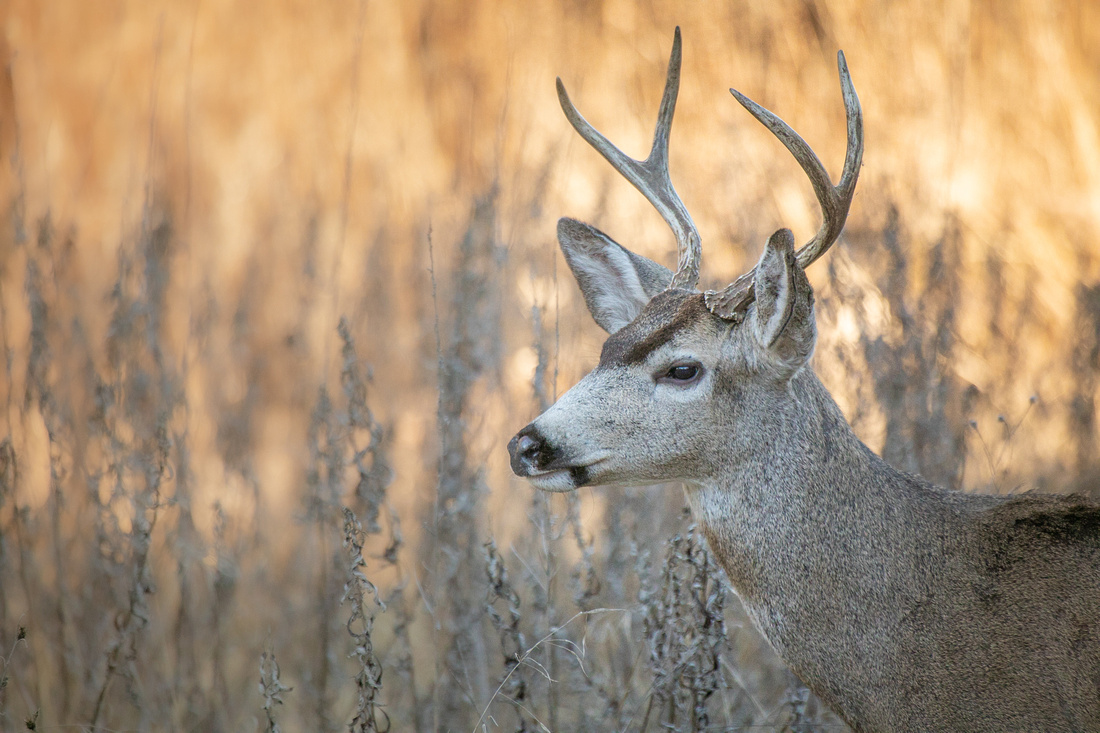 Male Black-tailed Deer, Carmichael California
Male Black-tailed Deer, Carmichael California
There are 43 species of deer on Earth, with the White-tailed deer being the most common across North America. If you live in California however, you won’t likely see these because our most common species of deer is the Black-tailed deer, which one of nine sub-species of the Mule Deer.
Black-tailed deer are categorized by two common mule deer subspecies: Columbian black-tailed deer and Sitka black-tailed deer. Columbian black-tails can be found in the coastal areas of northern California, Oregon, Washington, and southern British Columbia, while the Sitka subspecies are found on coastal areas of northern British Columbia and southeastern Alaska.
Since I live in California and see Columbian black-tailed deer nearly every day, I thought this would be a great species to highlight.
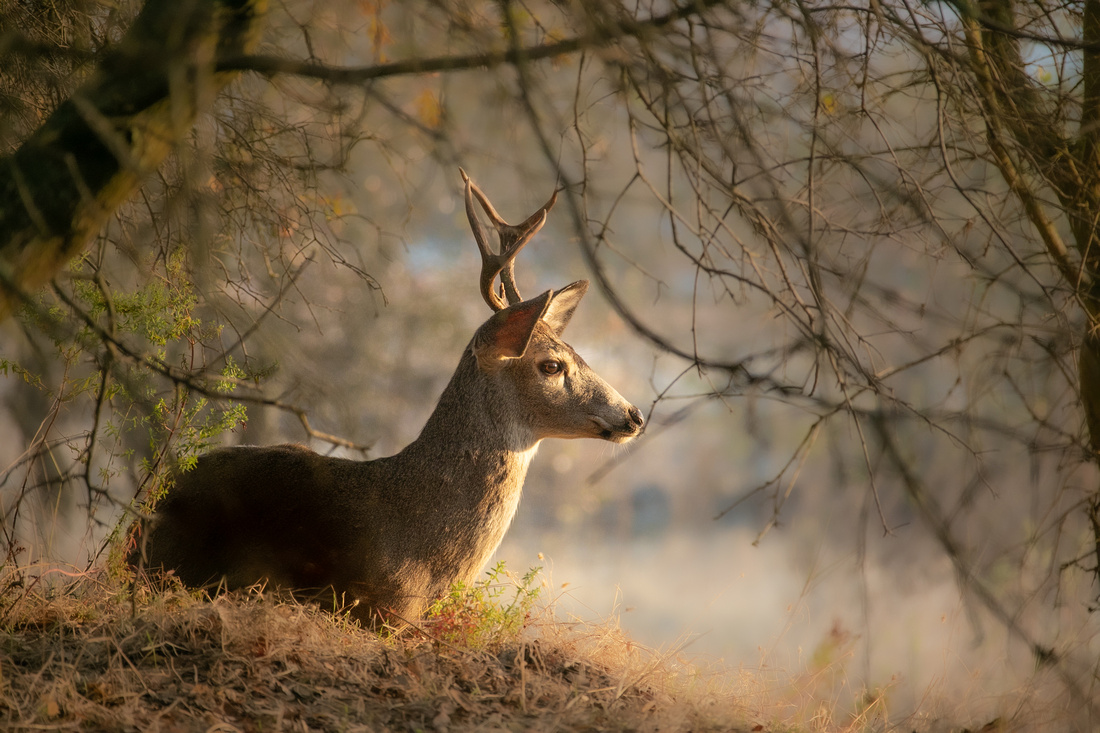 Male Black-tailed Deer, Carmichael California
Male Black-tailed Deer, Carmichael California I’ll also include some information and photos of Mule Deer as they are also common in California.
I’ll also include some information and photos of Mule Deer as they are also common in California.
Size
Adult males stand up to 3 feet at the shoulder and weigh around 200 pounds, while adult females weigh around 130 pounds.
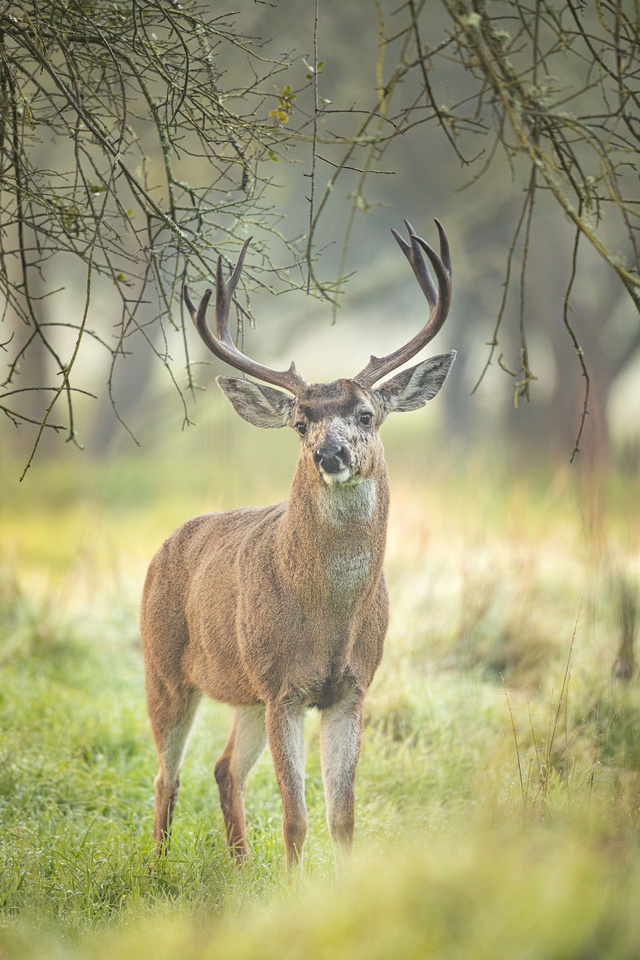 Male Black-tailed Deer, Carmichael California
Male Black-tailed Deer, Carmichael California
Lifespan
9-10 years in the wild and 17-20 years in captivity
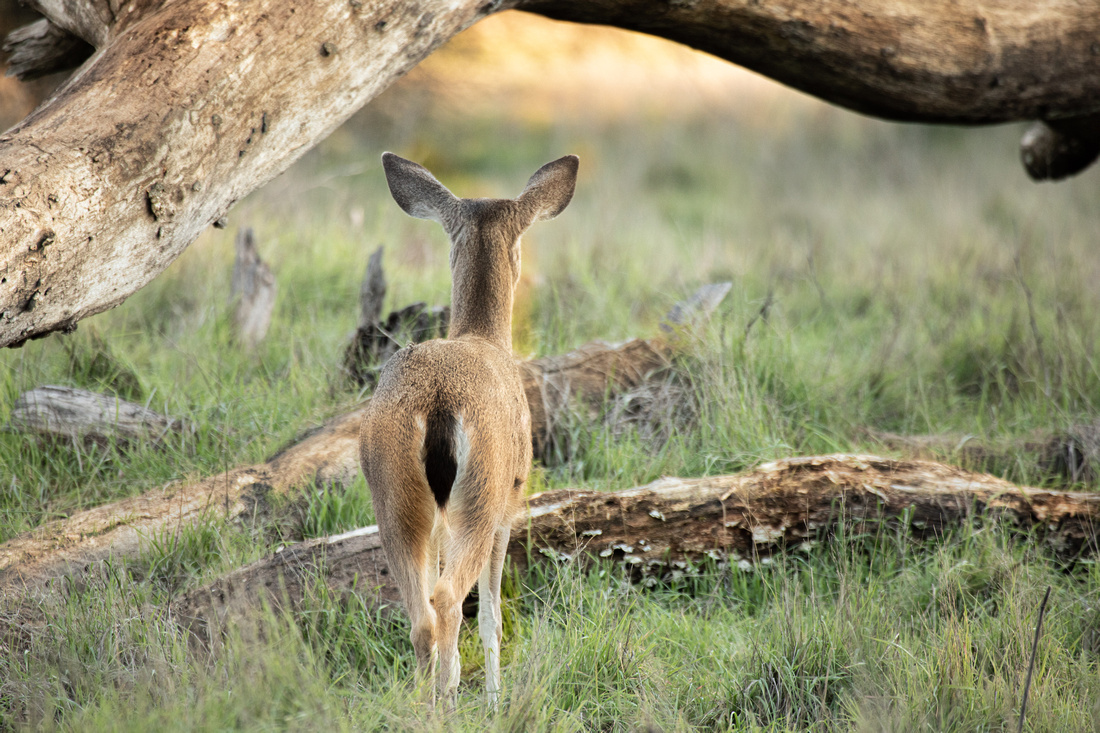 Female Black-tailed Deer, Carmichael California
Female Black-tailed Deer, Carmichael California
Anatomy
- Coat: reddish-brown in summer and brownish-gray during winter.
- Tails: completely black or dark brown on top, and white underneath. They raise their tails to expose the white underside when they're frightened.
- Antlers: Bucks have dark brown antlers with symmetrical branching. Male fawns begin growing antler buttons at six to eight months old. These become full-size antlers in four to five years. Their antlers develop under a layer of skin called velvet. The velvet dries up and peels off once the antlers have fully developed. Antlers are shed annually, between December and March, and end up on the forest floor, providing a source of calcium for other animals. New antlers appear between April and August. They become bigger and have more branches each year.
-
 Male Mule Deer, Yosemite National Park California
Male Mule Deer, Yosemite National Park California
- Ears: Mule deer and black-tailed deer are known for their uniquely large ears resembling those of a mule. The ears can move independently, giving them an excellent sense of hearing.
- Vision: They have a good eyesight and can see other animals at a distance of up to 2,000 feet.
- Digestion: Deer are ruminants with four stomachs. Barely chewed food is swallowed, then regurgitated and re-chewed. The food passes through three additional stomachs before entering the intestine.
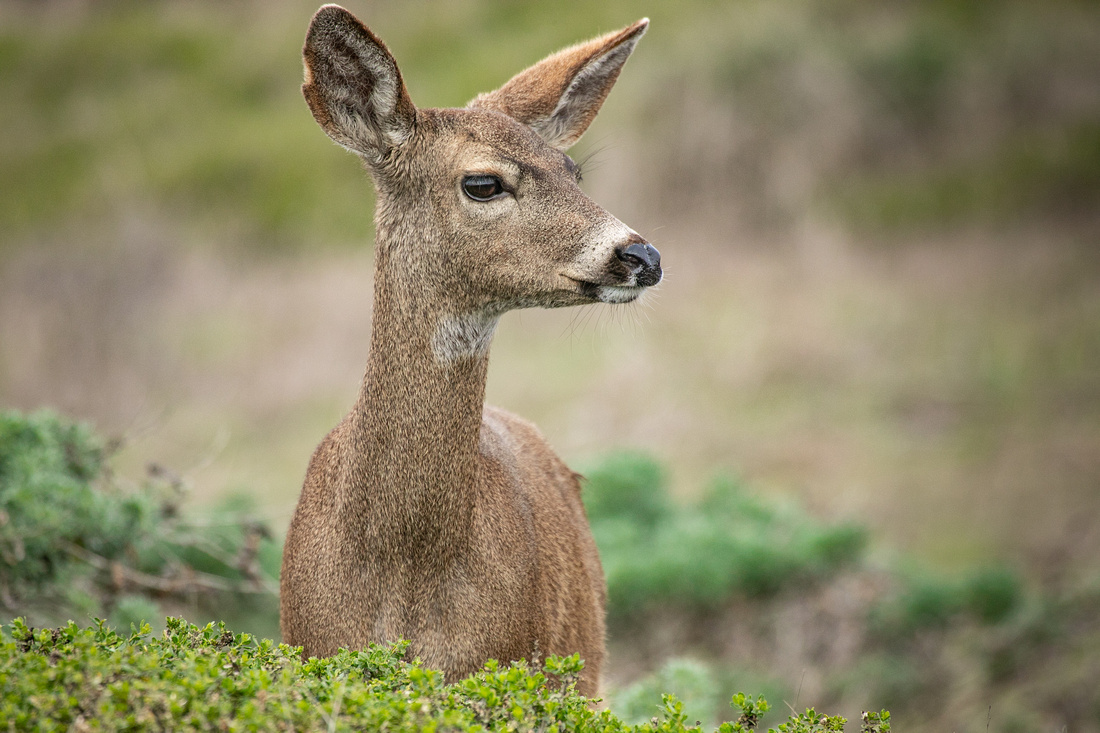 Female Black-tailed Deer, Point Reyes California
Female Black-tailed Deer, Point Reyes California
Speed & Agility
These deer can reach up to 50 mph and can jump an average of 8 feet high. They do have poor vertical vision and will not typically risk the jump if they are uncertain.
 Male Black-tailed Deer, Carmichael California
Male Black-tailed Deer, Carmichael California
Diet
Deer are herbivores. The Mule deer eats western poison oak, along with various berries, nuts, herbs, grass, shrubs, acorns, and lots of green foliage. Specifically, they browse western red cedar, forbs, blackberries, apples, maple, fireweed, deer fern, salal, and red huckleberry in the forest. The Black-tailed deer diet also includes cultivated crops, lichens, mushrooms and prefers new plant growth in summer.
Black-tailed deer feed along tree-line edges, where they can disappear into the forest if they're threatened.
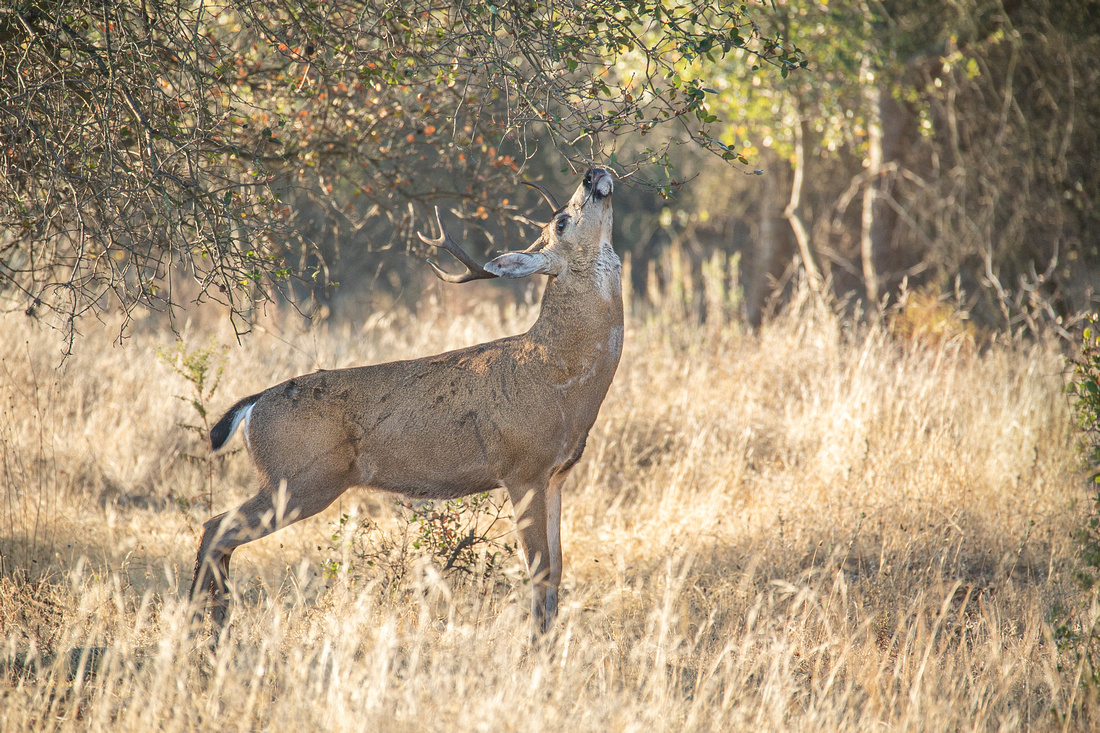 Male Black-tailed Deer, Carmichael California
Male Black-tailed Deer, Carmichael California
Social and Breeding Behaviors
Black-tailed deer are active at dusk and dawn. During the day they rest in thickets near streams of water. They migrate from higher altitudes where they spend the summer to lower elevations during the winter. These ungulates are browsers and can be seen browsing around forests on the roadside.
The mating season, also called the rutting season takes place during November and December during which time bucks chase after does, sometimes back and forth across roads. Sparring to establish dominance is common among bucks. Does prefer bucks with large, heavy antlers.
The gestation period lasts between 6 and 7 months. Fawns arrive in May or early June, weighing 6 to 8 pounds. Twin births are common, but a young doe may give birth to a single fawn. Does are highly protective of fawns, and humans are seen as predators. In order to keep her young safe, a doe will leave her fawn in a secluded area, for as long as 12 hours, distracting predators away from her baby while she forages for food.
Bucks don't participate in raising the fawns, instead forming bachelor groups for the summer. Does and their fawns form small family groups, led by the oldest mother. Male fawns leave the family group when they reach maturity, at about 18 months old. Females are sexually mature at 2 years old.
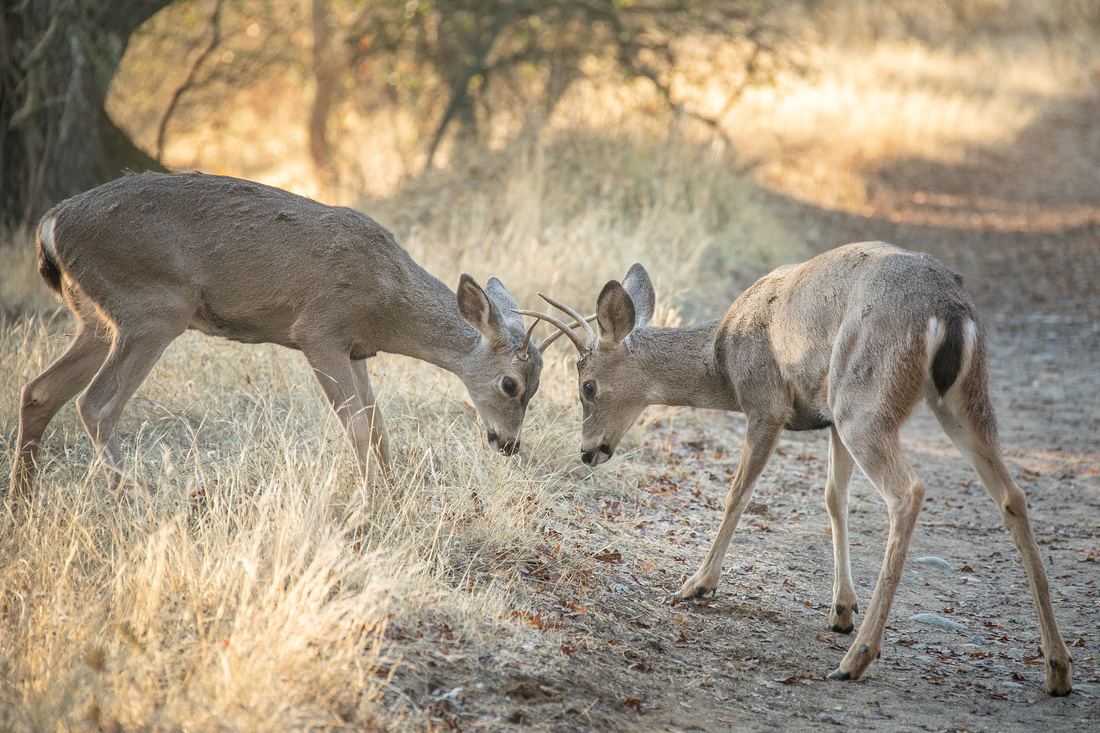 Juvenile male Black-tailed Deer play sparring, Carmichael California
Juvenile male Black-tailed Deer play sparring, Carmichael California
Communication
Deer commonly communicate through sound and scent. They use more than 10 separate vocalizations to communicate in the forest. They make rut-snorts followed by loud grunts. They are also very good at picking up unusual sounds that signal danger.
They also use pheromones secreted from glands on the lower part of their legs. Their excellent sense of sight and smell are used to communicate alarm, mutual recognition, even to leave a scent trail when they travel as they can produce different scents.
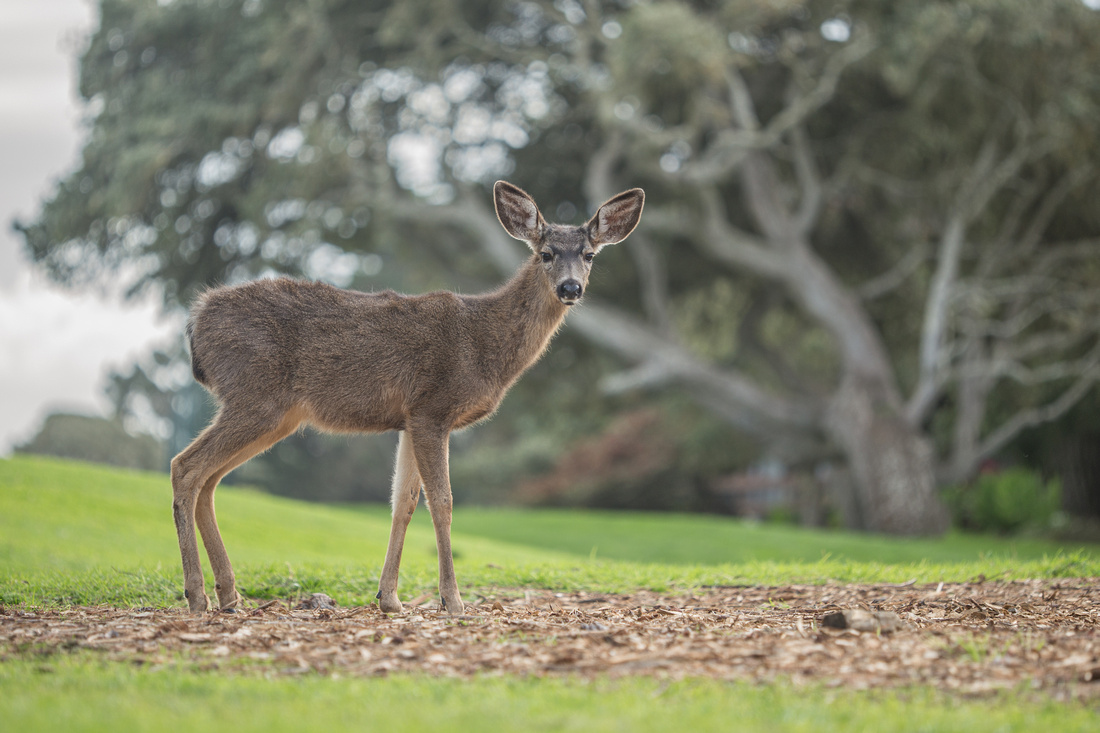 Female Black-tailed Deer, Pacific Grove California
Female Black-tailed Deer, Pacific Grove California
Predators and Threats
Predators include coyotes, mountain lions, domestic dogs, and of course, humans.
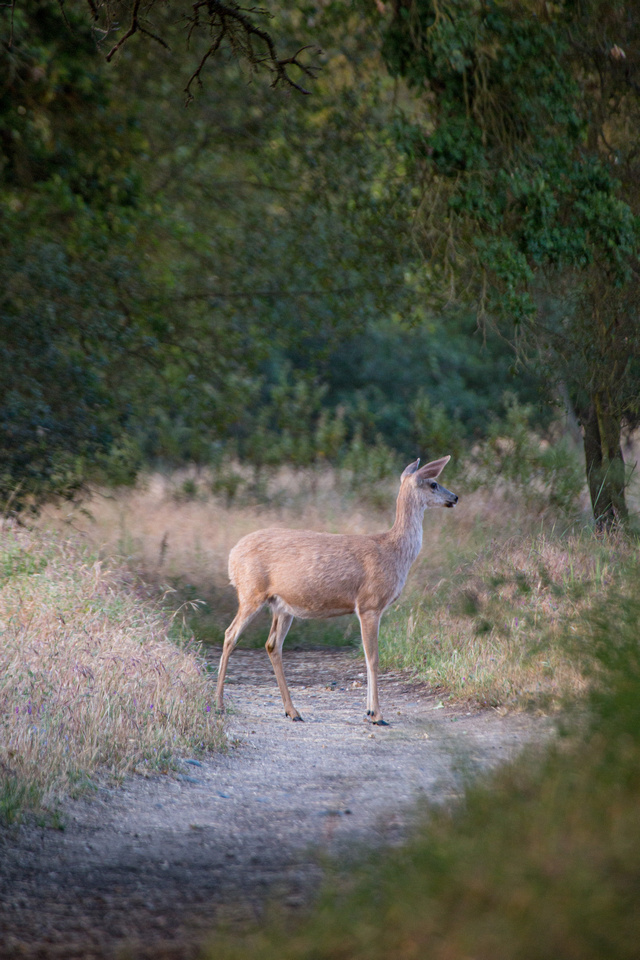 Female Black-tailed Deer, Carmichael California
Female Black-tailed Deer, Carmichael California
Habitat
Black-tailed deer live in forested mountains and foothills of the Pacific coast. The climate is mild, having cool temperatures and abundant rainfall. The California mule deer has a preference for hill terrain, especially an oak woodland habitat.
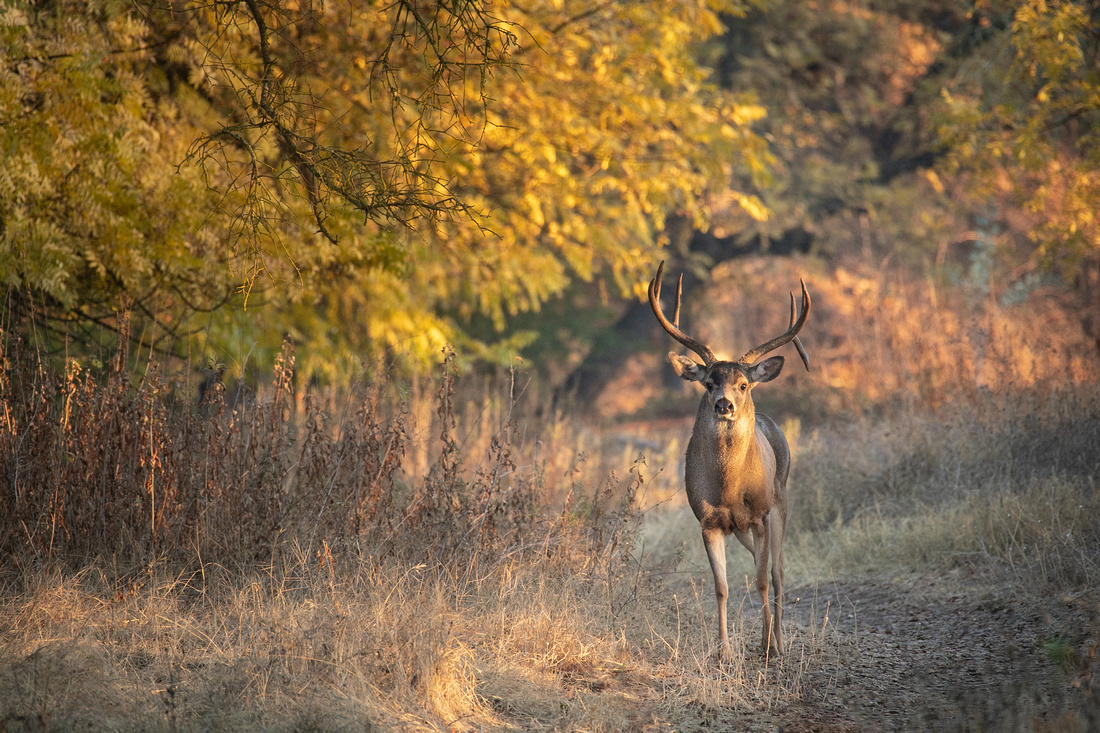 Male Black-tailed Deer, Carmichael California
Male Black-tailed Deer, Carmichael California
Migration
Migration is the seasonal movement between habitats. For mule deer this is typically the biannual movements between high elevation summer range and lower elevation winter range. Not every mule deer is migratory, as some remain on their range year-round. Migration is typically prompted by changes in food availability and weather.
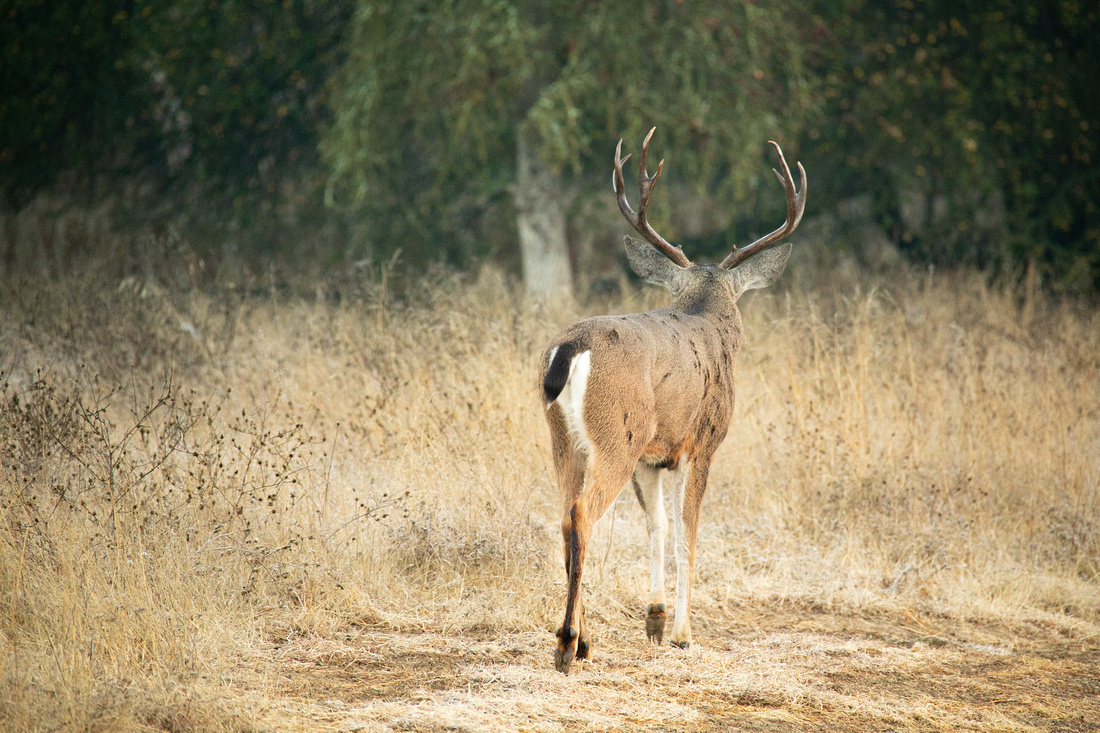 Male Black-tailed Deer, Carmichael California
Male Black-tailed Deer, Carmichael California
I hope you enjoyed this focus on the Black-tailed deer! Deer play an important role in the ecosystem. Their presence influences other organisms. Plants and animals all need beneficial conditions in order to survive - so let's do our part to contribute to those conditions so we can enjoy these creatures for years to come.
To see my entire Deer Gallery, check it out here: Deer Gallery
Comments
"Thank you!"
Truman